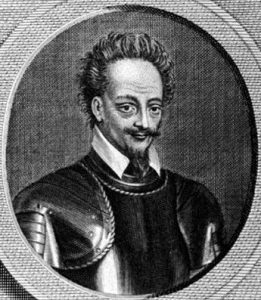Organisation
 Henri I de Bourbon, Prince de Condé (1552-1588) © S.H.P.F.
Henri I de Bourbon, Prince de Condé (1552-1588) © S.H.P.F.
At the top the three powers were balanced with a general assembly that gathered the representatives of provincial assemblies every six months. The general assembly elected a permanent council with four members and one military chief. Its powers were devolved to the king, such as raising taxes, appointing ambassadors, deciding on war, promulgating laws and orders and sometimes dispensing justice.
Locally the provincial assemblies were composed of city and village representatives who met every three months, nominated a permanent council of five members, and a military governor. All the representatives had to take the oath to the Protestant Union. He idea of a federal structure was absolutely new as the assembly designated its «protector», even if the monarchical tradition led to designating a blood-prince. In July 1574, the Millau Assembly designated prince Henri de Condé “chief, general governor of the Reformed Churches.” He was replaced from 1574 to 1579 by Henri de Montmorency-Damville, a Catholic ally of the Union, then by Henri de Navare after he escaped from the court.
The Union gathered the inhabitants of the Poitou, Languedoc, Dauphiné and Massif Central regions. It is mostly urban, even popular and its aim is to keep public morals. The “rules “treated the Catholic population considerately “peacefully.” Thus a real State within the State was created, based on the system of political assemblies, very close to the organisation of the Dutch United-Provinces.